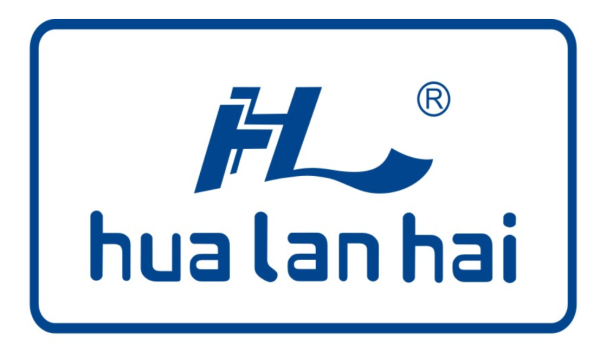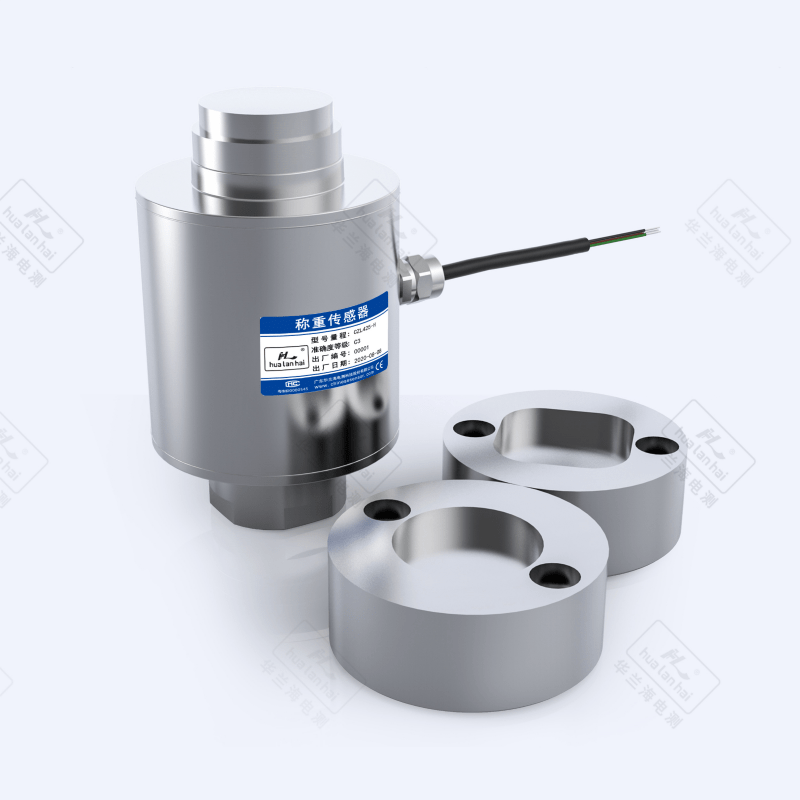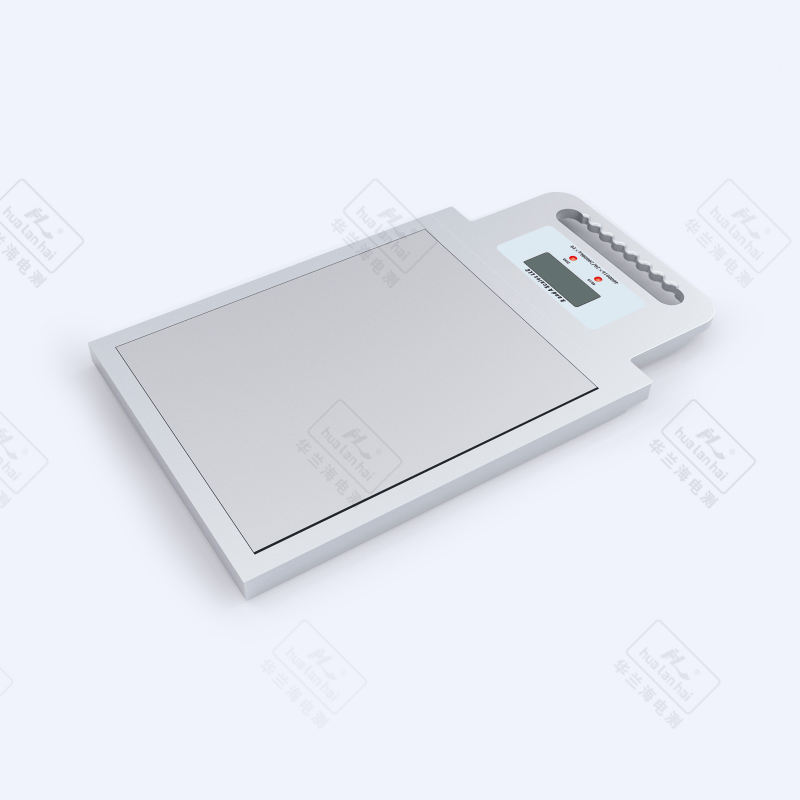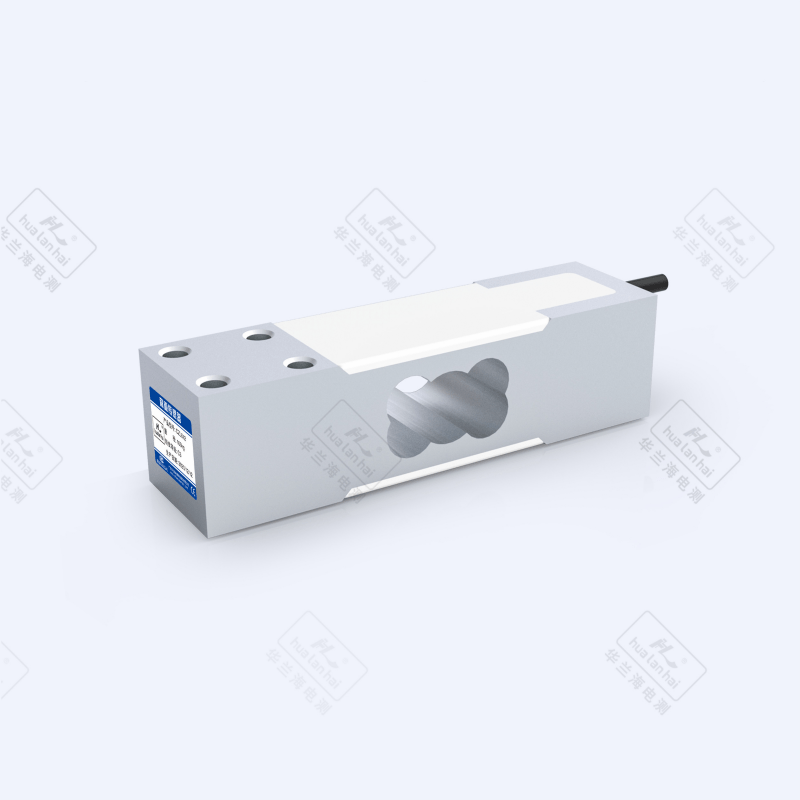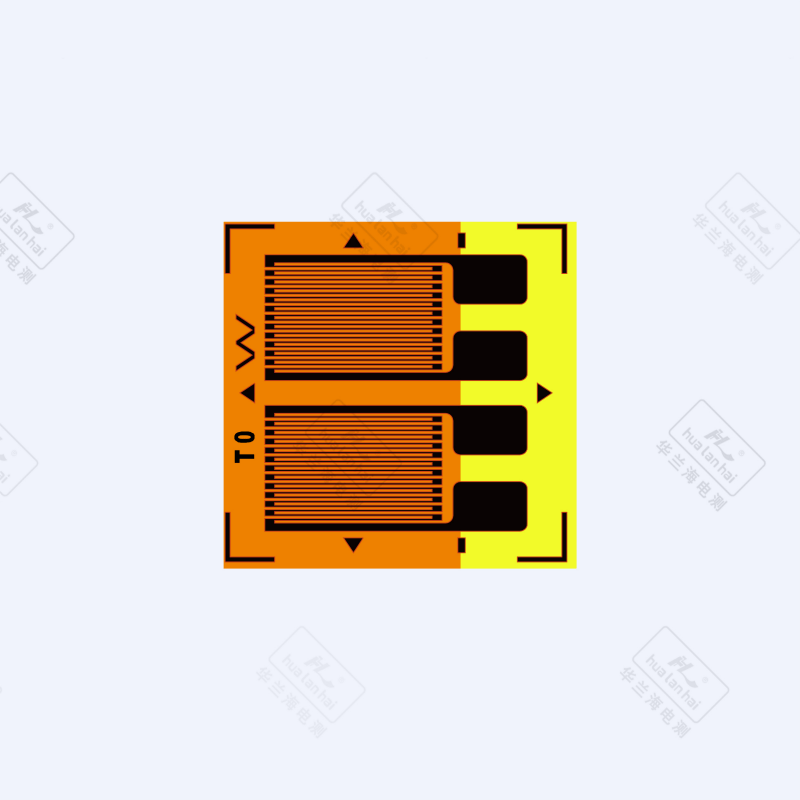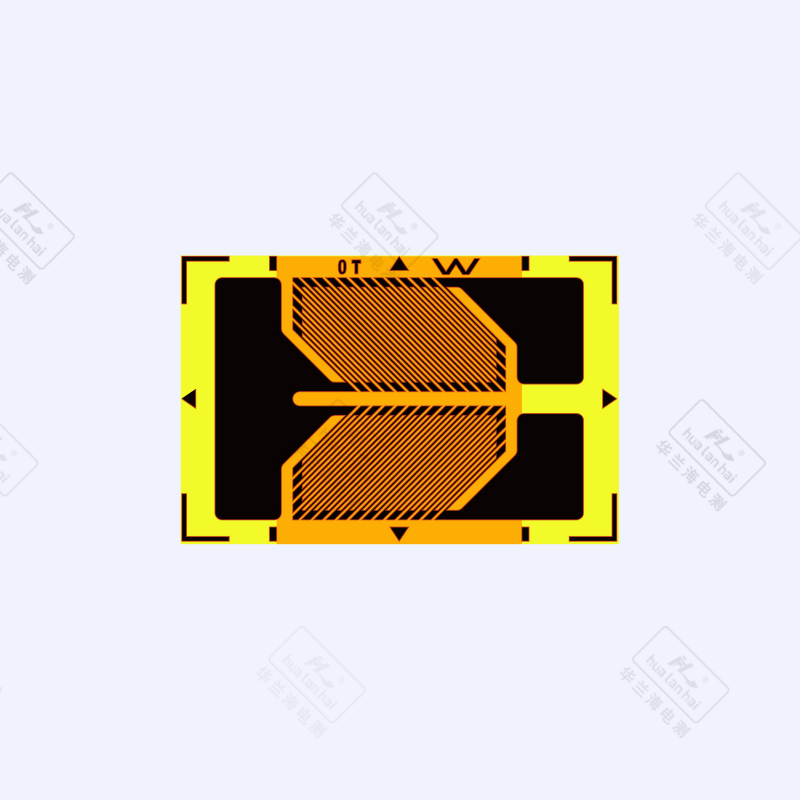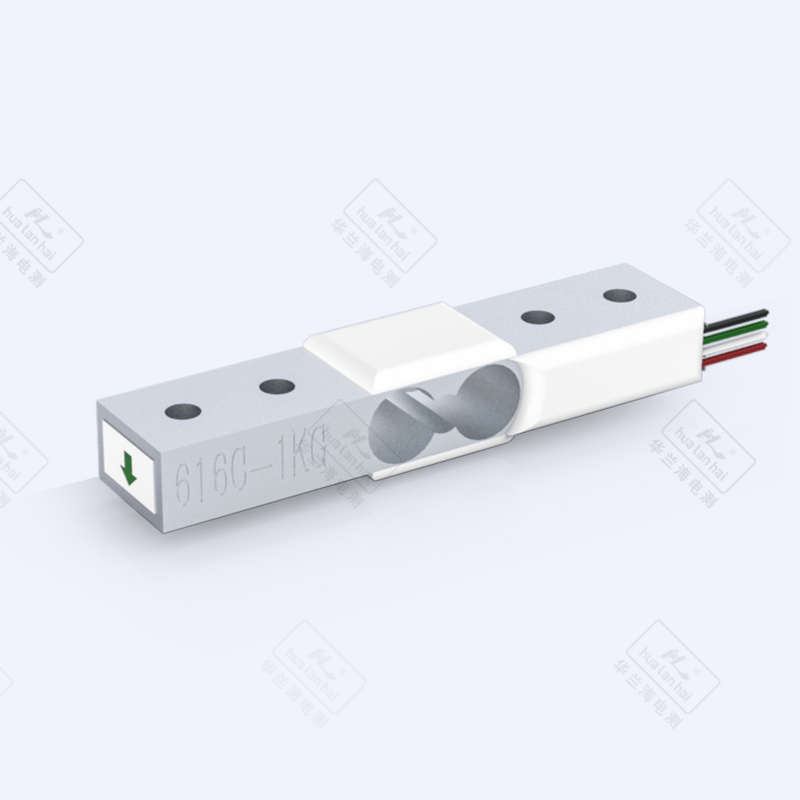- Overview
- Recommended Products
Product Introduction
Column load cells are force-sensitive components based on the strain gauge principle. They generate strain through the deformation of a cylindrical elastic body under force, which is then converted into an electrical signal by the strain gauge. They feature high rigidity, strong anti-interference ability, etc., and are widely used in medium and heavy load weighing scenarios. The following details are presented from the core dimensions to meet the needs of product selection, technical evaluation, and solution writing:
1. Product Features and Functions
Core Features
• Structural Design: Cylindrical elastomer (diameter 10-100mm optional), high-rigidity design (high natural frequency), strong anti-off-center load/lateral force capability (usually able to withstand lateral forces of ±5%-±10% of the rated load), and good force uniformity.
• Precision Performance: High precision grade (commonly C3, C6, with some high-end models reaching C1), non-linearity error ≤±0.01%FS, repeatability error ≤±0.005%FS, and small zero drift (≤±0.002%FS/℃).
• Materials and Protection: Elastomer material options include alloy steel (economical version, yield strength ≥800MPa) or stainless steel (304/316L, corrosion-resistant), with protection grade IP67/IP68 optional, suitable for humid, dusty, and slightly corrosive environments.
• Installation Compatibility: Both ends are threaded (M12-M60) or flange-connected, with a compact installation space, suitable for vertical/axial force scenarios, and multiple sensors can be connected in parallel to form a scale (supports 4-8 sensors working synchronously).
Core Functions
• Force/Weight Measurement: Supports static/dynamic weighing (dynamic response time ≤ 5ms), with a wide range of measurement (1t - 500t, some customized models can reach 1000t).
• Signal Output: Provides analog signals (4 - 20mA, 0 - 10V) or digital signals (RS485/Modbus, HART), compatible with mainstream weighing instruments, PLCs, and DCS systems.
• Additional Functions: Some models integrate temperature compensation (-20°C - 80°C compensation range), overload protection (150% - 200% of rated load), explosion-proof certification (Ex ia IIC T6), and lightning protection design.
• Long-Term Reliability: Long fatigue life (≥ 10⁶ cycles of load), good zero-point stability, and annual drift ≤ ±0.01%FS.
2. Core Problems Solved
• Insufficient measurement accuracy: To address the issues of poor anti-eccentric load performance and large data fluctuations in traditional sensors, high-rigidity structure and precise strain gauge bonding technology are adopted to ensure that the measurement error ≤ ±0.02%FS under eccentric load conditions.
• Poor adaptability to harsh environments: Stainless steel material + IP68 protection design solve the problems of sensor damage and signal drift in scenarios with humidity, dust, acid-base corrosion (such as chemical silos and outdoor weighing instruments).
• Installation and space limitations: Compact cylindrical structure + flexible connection method solve the problems of limited installation space and difficult axial force guidance in large equipment (such as reaction kettles and cranes).
• Stability of heavy-load measurement: High-rigidity elastomer + overload protection design prevent permanent deformation of sensors in medium and heavy-load scenarios (such as truck scales and port container weighing), ensuring long-term measurement reliability.
• System compatibility issues: Multiple signal output modes are available to solve the docking difficulties with different control systems (such as Siemens PLC and Kunlun Tongtai touch screen), eliminating the need for additional signal converters.
3. User Experience
• Installation Convenience: Standardized threaded/flange interfaces, complete with installation wrenches and locating pins, allow for single-person installation; horizontal adjustment holes are reserved at the bottom for easy calibration of the force direction.
• Operation and Calibration: Zero calibration is simple (one-button zeroing via the meter), supports calibration with standard weights (calibration process ≤ 10 minutes), and some digital models can be remotely calibrated via software.
• Low Maintenance Cost: Sealed structural design eliminates the need for frequent maintenance; strain gauges are coated with moisture-proof material, resulting in low failure rates (annual average failure rate ≤ 0.5%); easily replaceable parts (such as terminal blocks) can be replaced individually.
• Data Feedback: Fast signal response, no data lag in dynamic weighing scenarios; digital models come with built-in fault diagnosis functions (such as overload alarm, wiring abnormality prompt) for quick troubleshooting.
• Compatibility Experience: Compatible with over 90% of weighing instruments and control systems on the market, no need to modify hardware interfaces, Plug and Play; supports parallel connection of multiple sensors with automatic load distribution.
4. Typical Usage Scenarios
1)Industrial Weighing and Metrology
• Silo/Tank Weighing: Weight monitoring of powder/liquid silos in the chemical and building materials industries, supporting level control and inventory management (usually with 4 sensors symmetrically installed).
• Truck Scale/Rail Scale: Weighing of road and rail freight, with a single sensor capacity of 50-200t, multiple sensors connected in parallel to form a weighing platform (e.g., a 100t truck scale commonly uses 4 25t sensors).
• Reactor Weighing: Real-time weight monitoring of reactors in the pharmaceutical and chemical industries, cooperating with the control system to achieve precise control of feeding (explosion-proof sensors required).
2)Machinery and Equipment Integration
• Crane/Overhead Crane Overload Protection: Monitoring of the lifting capacity of cranes in ports and factories, triggering an alarm when the load exceeds the rated value (models with vibration resistance and fast response required).
• Press/Testing Machine: Measurement of pressure/tensile force in material mechanics testing, requiring high precision (C1 level) and high dynamic response (≤3ms).
• Construction Machinery: Batching weighing in concrete mixing plants and overload protection of tower cranes, suitable for outdoor humid and vibrating environments (protection level ≥IP67).
3)Weighing Instrument Manufacturing
• Core Components of Bench Scales/Floor Scales: Core sensing units of small and medium-sized bench scales (1-5t) and large floor scales (50-500t), requiring good consistency (error of multiple sensors ≤±0.01%FS).
• Customized Weighing Instruments: Such as explosion-proof electronic scales and corrosion-resistant industrial scales, using stainless steel materials and explosion-proof certified sensors, suitable for the needs of special industries.
4)Other Special Scenarios
• Food/Pharmaceutical Industry: Hygienic stainless steel sensors (316L material, surface polished), used for raw material weighing and finished product metering, complying with GMP standards.
• Mining/Metallurgy Industry: Customized models for high-temperature environments (≤120℃), used for ore hopper weighing and weight monitoring of metallurgical furnaces (requiring high-temperature compensation function).
5. Usage Instructions (Practical Guide)
1)Installation Process
• Preparation: Clean the installation surface (ensure it is flat, free of oil, with flatness error ≤0.1mm/m), and inspect the sensor's appearance (no deformation, intact terminal blocks). • Positioning and Fixing: Install the sensor vertically at the load point to ensure the load is transmitted axially (avoid lateral forces); use a torque wrench to tighten it according to the specified torque (20-50N·m recommended for alloy steel sensors, 15-30N·m for stainless steel).
• Wiring Specifications: For analog signals (red - power +, black - power -, green - signal +, white - signal -), and for digital signals, wire according to the Modbus protocol; when wiring, keep away from high-voltage lines (≥10cm) to avoid electromagnetic interference.
• Protection Treatment: For outdoor installation, add a rain cover, and seal the wiring connections with waterproof connectors; in corrosive environments, apply an anti-corrosion coating to the sensor surface.
2)Calibration and Debugging
• Zero Calibration: Turn on the power and preheat for 30 minutes, press the "zero" button on the meter to ensure the zero output is within ±0.001%FS.
• Load Calibration: Place standard weights (recommended to be 50% and 100% of the rated load), record the meter readings, and correct the error through the meter or software (the error must be ≤ the allowable error corresponding to the accuracy class).
• Dynamic Debugging: In dynamic weighing scenarios, test the sensor's response time, adjust the meter's filtering parameters (usually the filtering frequency is 5-10Hz) to avoid data fluctuations.
3)Routine Maintenance
• Regular Inspection: Clean the sensor surface monthly, check if the wiring is loose; calibrate the zero point once a quarter, and perform a full calibration once a year.
• Fault Handling: If data drift occurs, check the supply voltage (should be stable at 12-24V DC); if there is no signal output, check if the wiring is correct or if the sensor is overloaded and damaged.
6. Selection Method (Precisely Matching Requirements)
1)Determination of Core Parameters
• Range Selection: Select a model with a range 1.2 - 1.5 times the actual maximum load (e.g., for a maximum load of 50t, a 60 - 75t sensor can be selected), leaving a margin for overload.
• Accuracy Class: For industrial metrology, select Class C3 (error ≤ ±0.02%FS); for laboratory testing, select Class C1 (error ≤ ±0.01%FS); for general monitoring, select Class C6 (error ≤ ±0.03%FS).
• Signal Type: Analog signals (4 - 20mA) are suitable for traditional instruments, while digital signals (RS485) are suitable for intelligent control systems and support remote monitoring.
2)Selection Based on Environmental Adaptability
• Temperature: For normal scenarios (-20°C - 60°C), select a standard model; for high-temperature scenarios (60°C - 120°C), select a high-temperature compensated model; for low-temperature scenarios (-40°C - -20°C), select a low-temperature-resistant model.
• Medium: For dry environments, select alloy steel; for humid/corrosive environments, select 304/316L stainless steel; for highly corrosive environments (e.g., acid-base solutions), select Hastelloy.
• Protection Class: For outdoor/humid environments, ≥ IP67; for underwater or dust-intensive environments, ≥ IP68.
3)Installation and System Compatibility
• Installation Method: For limited space, select threaded connections; for large loads, select flange connections; if there is a risk of eccentric load, select a model with anti-eccentric load design (eccentric load error ≤ ±0.01%FS).
• Compatibility: Confirm that the sensor output signal matches the existing instruments/PLCs; if multiple sensors need to be connected in parallel, select a digital model that supports address setting.
4)Confirmation of Additional Requirements
• Certification Requirements: Explosion-proof scenarios require Ex ia IIC T6 certification; the food industry requires FDA/GMP certification; metrology scenarios require CMC (Metrological Instrument Type Approval Certificate).
• Special Functions: For dynamic weighing, select a model with a response time ≤ 5ms; for remote monitoring, select an intelligent model with wireless transmission (LoRa/NB-IoT).
Summary
Column load cells feature "high rigidity, anti-interference, and wide range" as their core advantages, primarily addressing issues such as precise weighing, adaptation to harsh environments, and system compatibility in medium to heavy load scenarios. User Experience focuses on easy installation, simple maintenance, and stable data. When selecting a load cell, it is necessary to first clarify the three core requirements of range, accuracy, and environment, and then make a decision in combination with the installation method and system compatibility; during use, it is necessary to strictly follow the principles of axial force installation and regular calibration to ensure long-term reliability. They are suitable for fields such as industrial metrology, mechanical integration, and weighing instrument manufacturing, and are the preferred sensor type for medium to heavy load weighing scenarios.
Detail Display
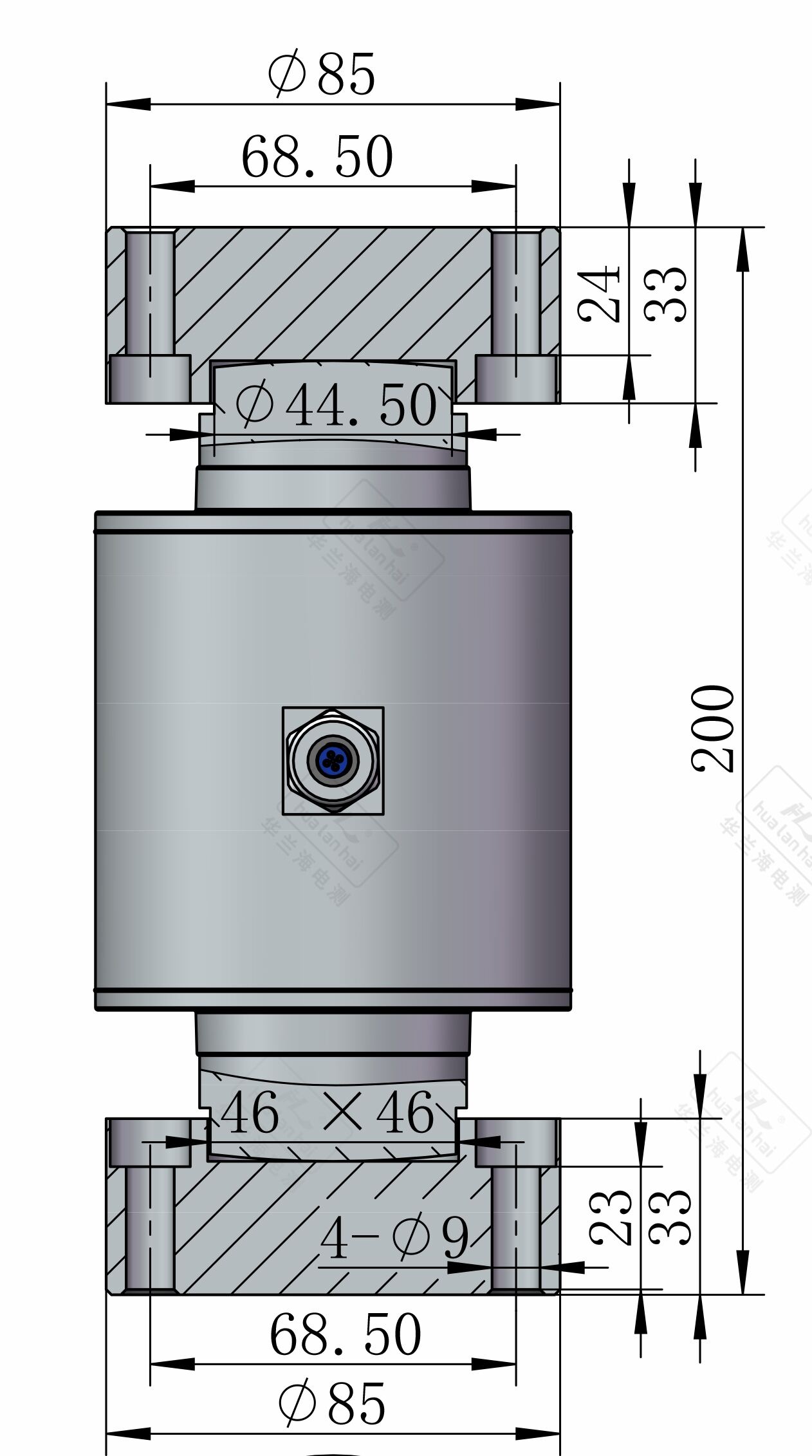
Parameters
| Parameter Name | Parameter Value |
| Rated load | 10t/20t/30t/40t |
| Precision | C2/C3 |
| Composition error | ±0.03 & ±0.02% FS |
| Rated output | 2.0±0.01 mV/V |
| Creep | ±0.023 & ±0.016% FS/30min |
| Zero balance | ±1.5% FS |
| Input resistance | 700±10Ω |
| Output resistance | 700±5Ω |
| Insulation resistance | ≥5000 MΩ(100VDC) |
| Temp.effect on span | ±0.017 & ±0.011% FS/10℃ |
| Temp.effect on zero | ±0.029 & ±0.019% FS/10℃ |
| Compensated temp.range | -10℃ ~ +40 ℃ |
| Use temp.range | -30℃ ~ +70 ℃ |
| Excitation voltage | 10VDC ~ 12VDC |
| Safe overload | 150% |
| Ultimate overload | 200% |
| IP code | IP68 |
